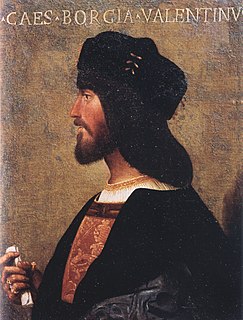
Cesare Borgia, Duke of Valentinois, was an Italian condottiero, nobleman, politician, and cardinal with Aragonese and Italian origins, whose fight for power was a major inspiration for The Prince by Machiavelli. He was the son of Pope Alexander VI and his long-term mistress Vannozza dei Cattanei. He was the brother of Lucrezia Borgia; Giovanni Borgia (Juan), Duke of Gandia; and Gioffre Borgia, Prince of Squillace. He was half-brother to Don Pedro Luis de Borja (1460–88) and Girolama de Borja, children of unknown mothers.
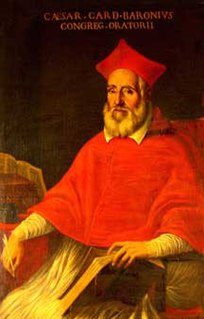
Cesare Baronio was an Italian cardinal and ecclesiastical historian of the Roman Catholic Church. His best-known works are his Annales Ecclesiastici, which appeared in 12 folio volumes (1588–1607). Pope Benedict XIV conferred upon him the title of Venerable.
Julius Caesar Aranzi was a leading figure in the history of the science of human anatomy.

Giulio Cesare in Egitto, commonly known as Giulio Cesare, is a dramma per musica in three acts composed for the Royal Academy of Music by George Frideric Handel in 1724. The libretto was written by Nicola Francesco Haym who used an earlier libretto by Giacomo Francesco Bussani, which had been set to music by Antonio Sartorio (1676). The opera was a success at its first performances, was frequently revived by Handel in his subsequent opera seasons and is now one of the most often performed Baroque operas.

Lorenzo di Credi was an Italian Renaissance painter and sculptor, known for his paintings on religious subjects. He first influenced Leonardo da Vinci and then was greatly influenced by him.

Giuseppe Cesare Abba was an Italian patriot and writer. As a participant on the expedition of i Mille he fought next to Giuseppe Garibaldi in his conquest of the Kingdom of the Two Sicilies in 1860.

Saint Lawrence of Brindisi, O.F.M. Cap., born Giulio Cesare Russo, was a Roman Catholic priest and a theologian as well as a member of the Order of Friars Minor Capuchin.
Giulio Cesare Martinengo was an Italian composer and teacher of the late Renaissance and early Baroque Venetian School. He was the predecessor to Claudio Monteverdi at St. Mark's.
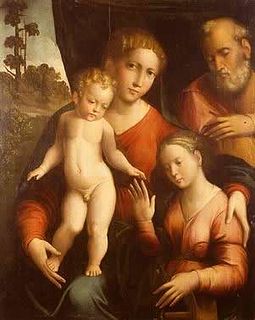
Innocenzo Francucci, generally known as Innocenzo da Imola, was an Italian painter and draftsman.

Bagni di Lucca is a comune of Tuscany, Italy, in the Province of Lucca with a population of about 6,100.
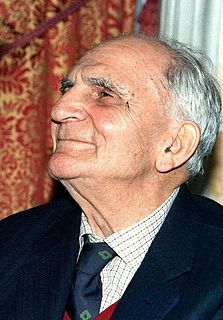
Attilio Bertolucci was an Italian poet and writer. He is father to film directors Bernardo and Giuseppe Bertolucci.
The year 1564 in art involved some significant events and new works.
The year 1530 in art involved some significant events and new works.
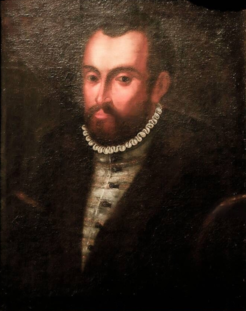
Cesare I Gonzaga was count of Guastalla from 1557 until his death. He was a member of the House of Gonzaga, the first-born son of the imperial condottiero Ferrante Gonzaga and Isabella di Capua. From the latter, he inherited also the title of Count of Amalfi. He was also Duke of Ariano and Prince of Molfetta. On 21 May 1558 he was appointed commander-in-chief of the troops in Lombardy by Philip II. On 12 March 1560 he married Camilla Borromeo, sister of Charles Borromeo and niece of Giovanni Angelo de' Medici, who had recently been elected Pope with the name of Pius IV.
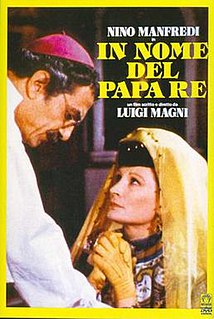
In the Name of the Pope King or In nome del papa re is a 1977 Italian drama film written, and directed by Luigi Magni. Starring Nino Manfredi, it was not released in USA until 1986. The score was composed by Armando Trovajoli.
Valerio Di Cesare is an Italian footballer, who plays as a defender for Bari.

Cesare Tallone (1853–1919) was an Italian painter.

The Leonardeschi is the large group of artists who worked in the studio of or under the influence of Leonardo da Vinci. In 1472 da Vinci joined the Guild of St Luke and at the end of 1477 he left the studio of Andrea del Verrocchio as an independent artist. In 1482 Leonardo came to Milan where he stayed with Giovanni Ambrogio de Predis, Evangelista de Predis and their four brothers, who all were artists of different kinds. Both Predis brothers are known for having collaborated with Leonardo da Vinci in the painting of the Virgin of the Rocks for the altarpiece in the chapel of the Confraternity of the Immaculate Conception at the Church of San Francesco Grande, Milan. In 1490 Leonardo earned recognition and a breakthrough at the court of Ludovico Sforza and because of the scale of works commissioned he was permitted to have assistants and pupils in his own studio.
Cesare Spighi was an Italian engineer and architect.
Cesare Catania is an Italian artist, painter and sculptor. He is sometimes known as the "Modern Leonardo Da Vinci". He is mostly known for his work "The Heart of the Earth - B Version" shown during the Biennal art of Saint Paul de Vence 2018 period and "The Heart of the Earth - A Version" created in 2012.















